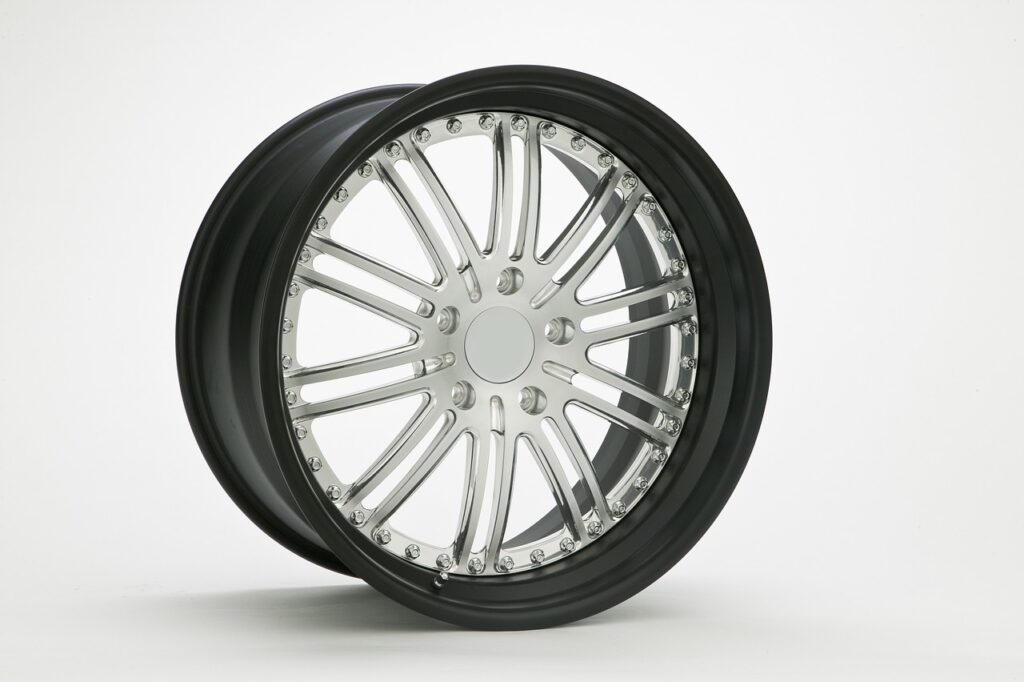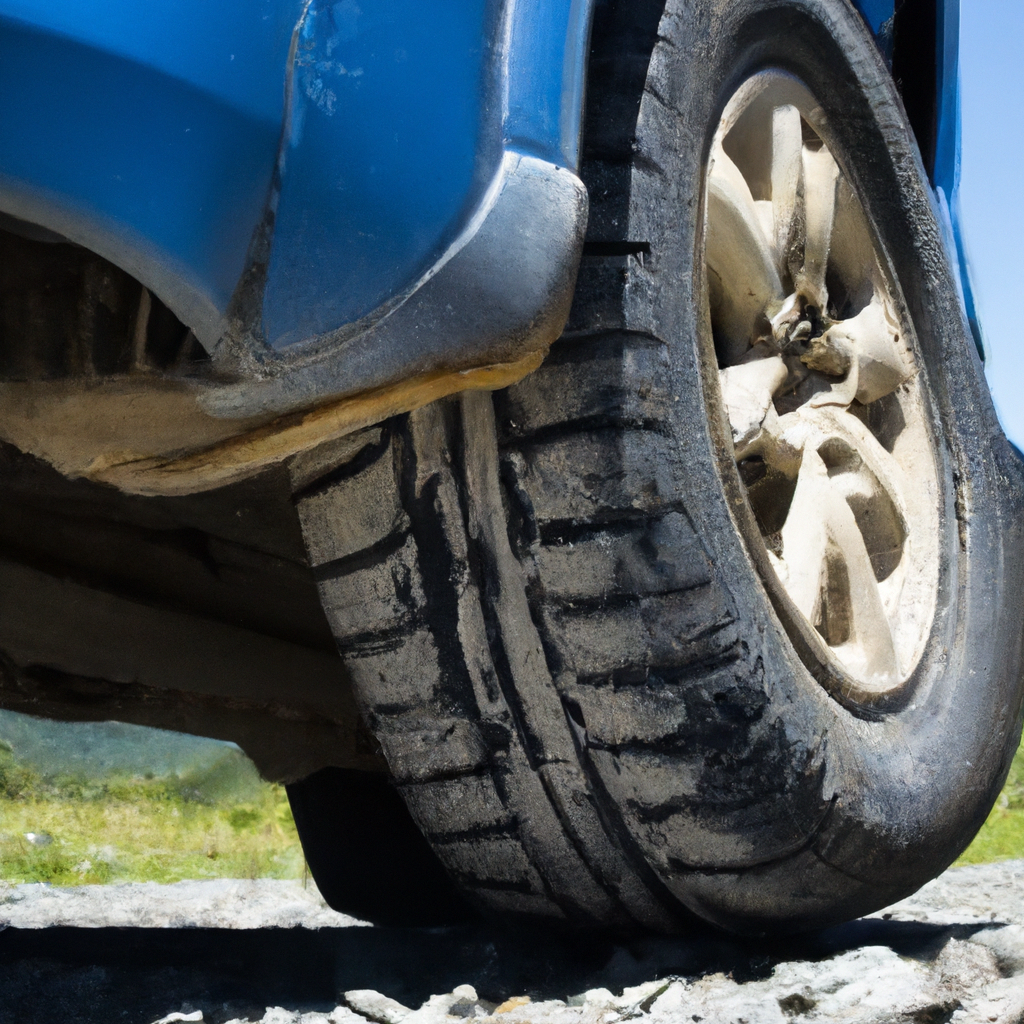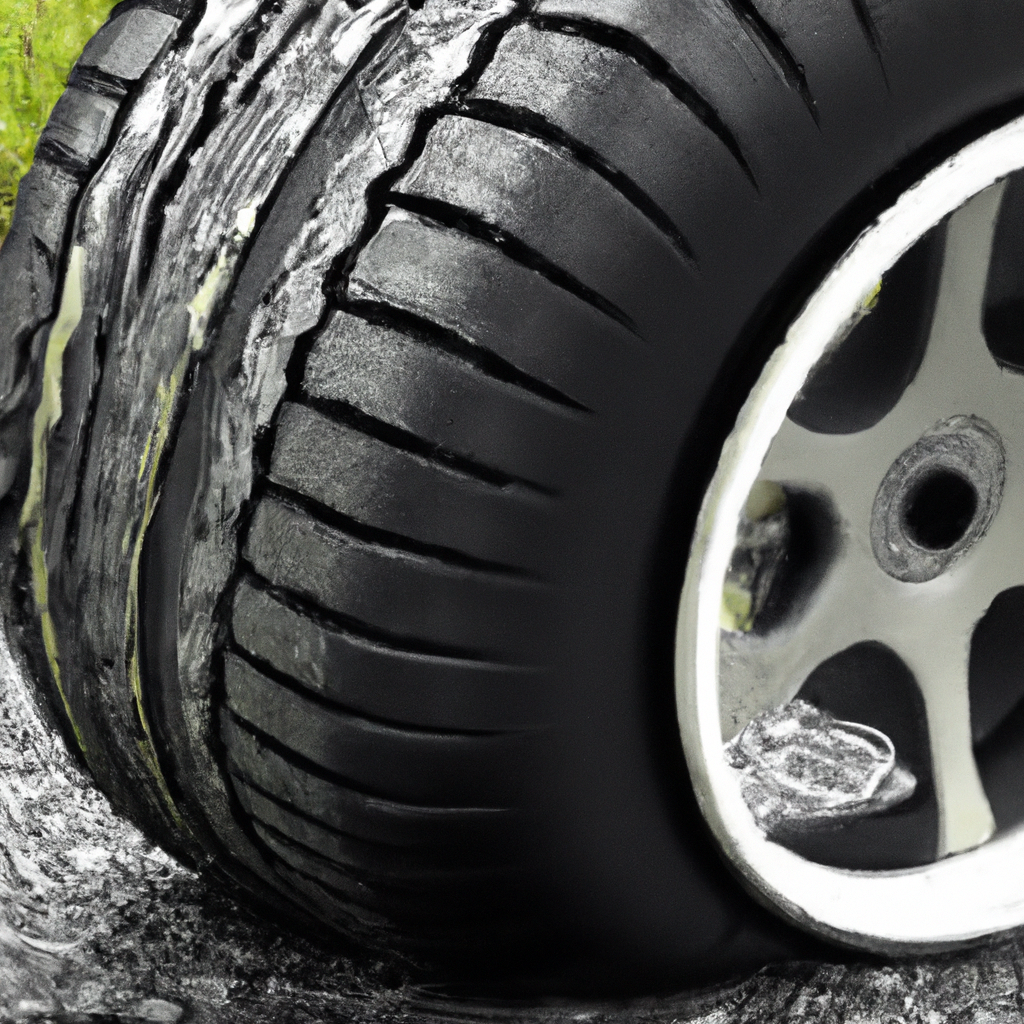Imagine driving down a bumpy, uneven road with the peace of mind that your tires will stay intact even if you hit a pothole or puncture. Curious about how run-flat tires handle such challenging terrain? Well, let’s take a closer look at how these specialized tires tackle rough or uneven roads.
Benefits of Run-flat Tires on Rough or Uneven Roads
Enhanced Safety
One of the major benefits of using run-flat tires on rough or uneven roads is enhanced safety. These tires are designed to allow you to continue driving even after a puncture or loss of tire pressure. This means that even if you encounter a sharp object or hit a pothole, you can still maintain control of your vehicle and continue driving to a safer location. This can prevent accidents and ensure that you are not stranded in a dangerous situation.
Better Control and Handling
Run-flat tires are known for their superior control and handling on rough or uneven roads. The reinforced sidewalls of these tires provide added stability and support, allowing for better maneuverability and control. This is especially beneficial when navigating through potholes or rough terrain, as run-flat tires can absorb shocks and maintain grip on the road surface. With run-flat tires, you can experience a smoother and safer ride, even on challenging road conditions.
Reduced Downtime and Convenience
One of the most significant advantages of run-flat tires is the reduced downtime and convenience they offer. In the event of a puncture or loss of tire pressure, run-flat tires allow you to continue driving for a certain distance at a reduced speed. This eliminates the need for immediate tire changes or roadside assistance, saving you time and hassle. You can safely reach a service station or tire repair shop without having to wait for a tow truck or change the tire yourself. This convenience is especially useful in areas with limited access to help or during long road trips where finding assistance may be challenging.
Factors Affecting Run-flat Tire Performance on Rough or Uneven Roads
Tire Pressure
Tire pressure plays a crucial role in the performance of run-flat tires on rough or uneven roads. Maintaining the correct tire pressure ensures optimal handling, control, and longevity of the tires. Driving with inadequate tire pressure can affect the tire’s ability to absorb shocks and provide a comfortable ride. It is essential to regularly check and maintain the recommended tire pressure for the specific make and model of your run-flat tires.
Tire Design and Construction
The design and construction of run-flat tires greatly influence their performance on rough or uneven roads. These tires are built with reinforced sidewalls, which provide extra support and stiffness. This reinforcement helps maintain the shape of the tire, even in the event of a puncture or loss of tire pressure. Additionally, the tread pattern and rubber compound used in run-flat tires are specifically optimized for better traction and grip on various road surfaces. It is important to choose high-quality run-flat tires with a suitable design and construction for optimal performance.
Road Surface Conditions
The condition of the road surface can significantly impact the performance of run-flat tires on rough or uneven roads. Run-flat tires are designed to handle a wide range of road conditions, including potholes, gravel, and uneven surfaces. However, extreme road conditions with deep potholes or large bumps may pose challenges even for run-flat tires. Continuously driving on extremely rough roads can result in excessive wear and damage to the tires. It is important to drive with caution and avoid aggressive maneuvers on particularly rough surfaces to ensure the longevity and performance of your run-flat tires.

Impact of Run-flat Tires on Ride Comfort
Stiffer Ride
One of the notable differences when driving with run-flat tires on rough or uneven roads is the stiffer ride quality. The reinforced sidewalls and construction of these tires make them firmer compared to traditional tires. This can result in a slightly harsher and less comfortable ride, especially on roads with significant bumps or potholes. However, advancements in tire technology have helped to minimize this issue, and many drivers find that the difference in ride comfort is not significant enough to outweigh the benefits of run-flat tires.
Noise and Vibration
The use of run-flat tires on rough or uneven roads may also lead to increased noise and vibration levels in the vehicle cabin. The reinforced sidewalls and stiffer construction of these tires can transmit more road noise and vibrations to the driver and passengers. However, modern run-flat tires are designed to minimize noise and vibration as much as possible. Manufacturers employ various techniques, such as optimized tread patterns and advanced rubber compounds, to reduce noise and vibration levels. While there may be a slight increase in noise and vibration compared to traditional tires, it is usually within an acceptable range and does not significantly compromise ride comfort.
Handling and Stability of Run-flat Tires on Uneven Roads
Tire Stiffness and Response
The stiffness and response of run-flat tires play a vital role in their handling and stability on uneven roads. The reinforced sidewalls provide added stiffness, which contributes to better control and responsiveness. This stiffness allows the tires to maintain better contact with the road surface, even when driving on rough or uneven terrain. As a result, run-flat tires offer improved handling and stability, enabling you to navigate corners and turns with confidence.
Cornering Performance
Run-flat tires excel in cornering performance on rough or uneven roads. The reinforced sidewalls and optimized tread patterns of these tires allow for enhanced grip and traction during cornering maneuvers. This provides better control and stability, even when encountering bumps or potholes mid-corner. With run-flat tires, you can confidently tackle corners on uneven roads, knowing that the tires will maintain their grip and stability throughout the maneuver.
Braking Performance
When it comes to braking performance on rough or uneven roads, run-flat tires offer significant advantages. The reinforced sidewalls and advanced tire compound of these tires enhance their ability to grip the road surface during braking. This translates to shorter braking distances and improved stopping power, even on challenging road conditions. Run-flat tires allow for more controlled and reliable braking, reducing the risk of accidents or skidding on uneven surfaces.

Run-flat Tires and Potholes
Pothole Damage and Run-flat Tires
Potholes are a common road hazard that can cause damage to traditional tires. However, run-flat tires are designed to withstand the impact of potholes and minimize the risk of flat tires. The reinforced sidewalls and construction of run-flat tires provide added protection against pothole damage. Even if you hit a pothole, the tire will remain functional, allowing you to continue driving to a safer location. This can greatly reduce the inconvenience and potential dangers associated with experiencing a flat tire in the middle of the road.
Pothole Impact on Ride Quality
While run-flat tires offer increased resistance to pothole damage, it is important to note that hitting a pothole can still have an impact on ride quality. Potholes can cause jarring vibrations and may affect the alignment of the wheels, leading to an uncomfortable ride. However, run-flat tires can help mitigate the effects of potholes by maintaining tire pressure and stability after impact. Additionally, advances in tire technology have allowed manufacturers to improve the shock absorption capabilities of run-flat tires, minimizing the discomfort caused by potholes.
Run-flat Tires and Rough Off-road Conditions
Limited Off-road Capability
Run-flat tires are primarily designed for use on paved roads and are not intended for extensive off-road use. While they can handle minor off-road conditions, such as gravel or dirt roads, they may not perform optimally in rough off-road terrains. The reinforced sidewalls and stiffer construction of run-flat tires may limit their ability to provide adequate traction and shock absorption on more challenging off-road surfaces. If you frequently traverse rough off-road conditions, it is recommended to consider specialized off-road tires for better performance and durability.
Suspension and Shock Absorption
When driving on rough off-road conditions with run-flat tires, the suspension and shock absorption capabilities of the vehicle play a crucial role in maintaining a comfortable ride. Run-flat tires transmit more road vibrations to the vehicle’s suspension system due to their stiffer construction. It is important to ensure that your vehicle’s suspension is properly maintained and suited for off-road driving to maximize comfort and minimize the impact on the overall ride quality.

Maintenance and Replacement Considerations for Run-flat Tires
Regular Tire Inspections
Due to their unique construction and capabilities, run-flat tires require regular inspections to ensure optimal performance and safety. Monitoring tire pressure, tread depth, and overall tire condition is essential for identifying any potential issues that may affect the tire’s performance on rough or uneven roads. Regular tire inspections help prevent premature wear, ensure proper traction, and reduce the risk of unexpected tire failures.
Repair and Replacement Guidelines
In the event of a puncture or damage to a run-flat tire, it is crucial to follow the manufacturer’s repair and replacement guidelines. Run-flat tires may have limitations on repairability depending on the extent and location of the damage. It is generally recommended to consult a professional tire technician for proper assessment and guidance. In some cases, it may be necessary to replace the damaged run-flat tire to maintain the safety and performance of your vehicle.
Other Factors to Consider about Run-flat Tires on Rough or Uneven Roads
Temperature Sensitivity
Extreme temperatures can affect the performance of run-flat tires on rough or uneven roads. High temperatures can cause the tire pressure to increase, potentially leading to overinflation and reduced traction. On the other hand, low temperatures can result in decreased tire pressure and reduced tire performance. It is important to monitor the tire pressure and adjust it accordingly based on the prevailing temperatures to ensure optimal performance and safety.
Speed Restrictions
Run-flat tires may have speed restrictions, which vary depending on the tire manufacturer and model. These restrictions dictate the maximum speed at which the tire can be driven safely when experiencing a puncture or loss of tire pressure. It is important to be aware of and adhere to these speed restrictions to avoid compromising the tire’s integrity and safety.
Driving Habits
Your driving habits can also influence the performance of run-flat tires on rough or uneven roads. Aggressive driving, such as excessive speeding, hard cornering, or sudden braking, can put additional stress on the tires, potentially leading to premature wear and reduced performance. It is important to drive responsibly and adapt your driving style to suit the road conditions to ensure the longevity and effectiveness of your run-flat tires.

Technological Advancements in Run-flat Tire Design
Reinforced Sidewall Technology
Reinforced sidewall technology is one of the key advancements in run-flat tire design. This technology involves the use of stronger materials and innovative construction techniques to reinforce the sidewalls of the tires. The reinforced sidewalls provide additional support and stiffness, allowing the tires to maintain their shape and functionality, even when punctured or experiencing a loss of tire pressure. This technology has greatly enhanced the safety and reliability of run-flat tires on rough or uneven roads.
Hybrid or Self-sealing Tires
Hybrid or self-sealing tires are another technological advancement in run-flat tire design. These tires feature a combination of traditional and run-flat technologies, providing a hybrid solution for improved performance on rough or uneven roads. Hybrid tires offer the benefit of run-flat capabilities while also providing enhanced ride comfort and reduced road noise. Some hybrid or self-sealing tires even have the ability to seal minor punctures automatically, further reducing the risk of tire failure and inconvenience.
Conclusion
In conclusion, run-flat tires offer numerous benefits when driving on rough or uneven roads. They provide enhanced safety, better control and handling, and reduced downtime and convenience. However, it is important to consider factors such as tire pressure, tire design, road surface conditions, and the impact on ride comfort before opting for run-flat tires. Additionally, the limitations of run-flat tires in regards to off-road capability and maintenance requirements should be taken into account. With advancements in run-flat tire technology, manufacturers have been able to improve the overall performance and safety of these tires, providing drivers with a reliable option for navigating rough or uneven roads with peace of mind.


